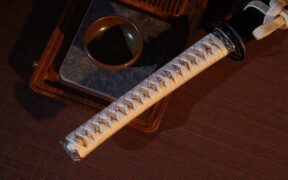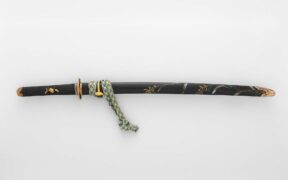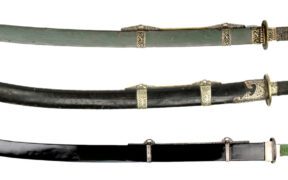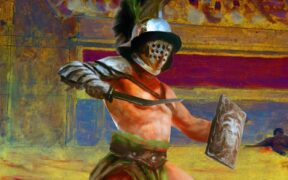Saya Unveiled: Japanese Scabbard Characteristics and Design
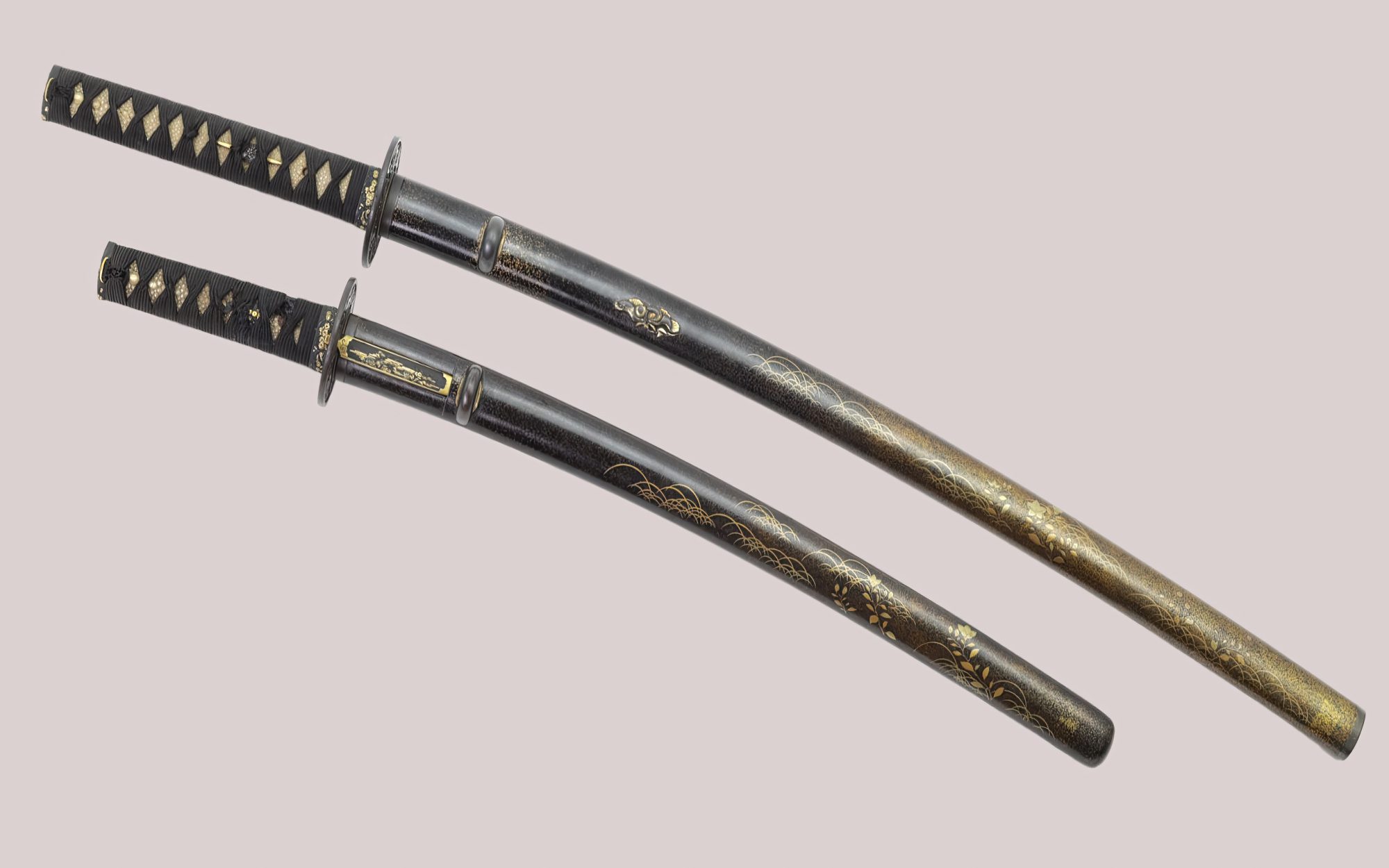
The scabbard of a Japanese sword is called a saya, and it is a simple and elegant way to protect the blade. These scabbards are custom-made to fit the sword and are meticulously crafted. The saya makers, called sayashi, are highly skilled and provide a resting place for the sword.
Exploring the Saya: Unique Characteristics and Design
A saya can be a plain, unfinished wooden scabbard called shirasaya. When the sword is mounted in a koshirae—a complete, functional mounting—the scabbard generally has a lacquered body and can be very elaborate. The former is designed for practical storage, while the latter is for actual use and display.
Here are the notable characteristics of a saya:
Material
Traditionally made scabbards in Japan are always crafted from ho wood, a soft hardwood in the magnolia family. Ho wood is ideal for scabbard making because it is soft enough not to scratch the blade’s surfaces. Additionally, it has a regular grain and can be easily worked with traditional tools, such as a chisel (nomi) and a plane (kanna). When seasoned properly, ho wood is completely dried out, making it suitable for protecting and preserving a steel weapon.
Size and Length
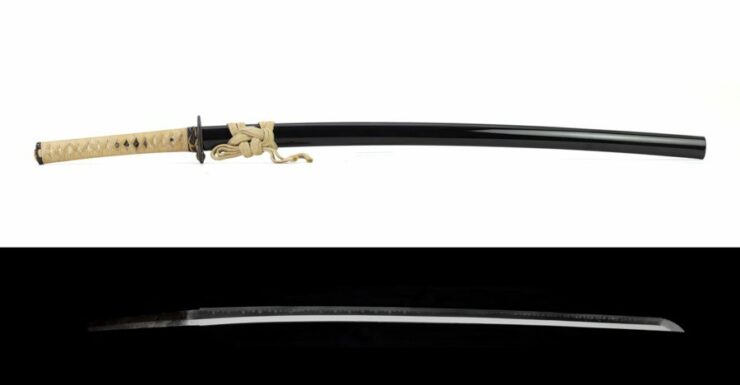
Generally, the fit of the scabbard must be exact, tailored to each specific blade, whether it is a katana, tachi, wakizashi, or tanto. It must be a good fit, preventing the blade from rattling around inside but not too tight that the blade surface will be scratched.
For instance, a saya made for a wakizashi or short sword can be around 27 1/16 inches (68.7 cm), while the blade’s overall length is about 23 5/8 inches (60 cm), with a cutting edge of 17 3/4 inches (45.1 cm). Also, some blades are quite slender or wide for their length, and the saya follows their unusual shape.
Appearance and Design
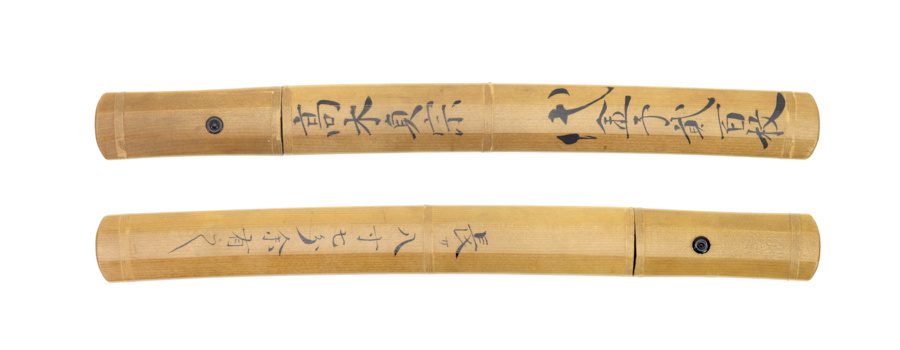
A shirasaya is an unadorned, unfinished wooden scabbard designed for storage and protection, but it is not suitable for the practical use of the sword. It sometimes comes with a sayagaki—an inscription or appraisal written with ink. The sayagaki is added by the sword’s maker or owner, revealing information such as the swordsmith, the date it was made, and the owner’s name.
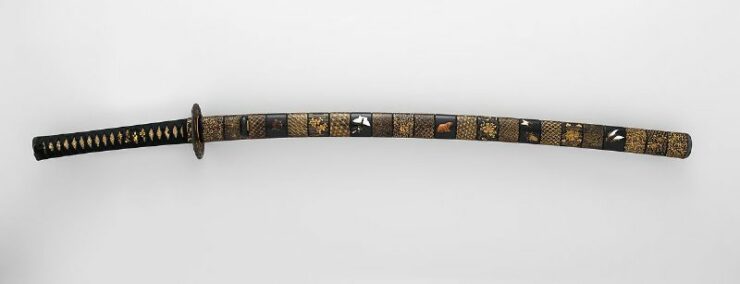
Meanwhile, a saya with complete functional mounting or koshirae is usually lacquered, and its wooden hilt is wrapped with stingray skin. The koshirae also includes a sword guard (tsuba), braided hilt wrapping, and other metal components. Most old Japanese swords today are in shirasaya because their koshirae have deteriorated over the years.
What Makes a Good Saya?
The exterior of a shirasaya (plain, wooden scabbard) differs greatly from its more decorative cousin, but their requirements are the same. The insides of the saya must not come in contact with the blade at all. Instead, the blade should only slide into or out of the scabbard on its unsharpened back surface.
The habaki (blade collar) secures the blade within the scabbard, and the blade should not rattle inside the scabbard either. More than that, the seams must be tight to keep out moisture and dirt, yet able to be easily popped apart for occasional cleaning of the interior.
Changes in temperature and humidity often affect the wood. When a scabbard is going to a drier climate than the humid conditions in Tokyo, it is preferable for it to have a very loose fit. Once it reaches its final destination, the much lower humidity in the region will cause the wood to shrink, resulting in a perfect fit.
Older Japanese swords must be re-polished periodically. When this is done, a new shirasaya can be made, or the existing scabbard will be opened, cleaned, and glued back together to protect the newly polished blade. If it is a replacement scabbard for a fully mounted sword, it must match to the metal fittings and other pieces of the koshirae.
